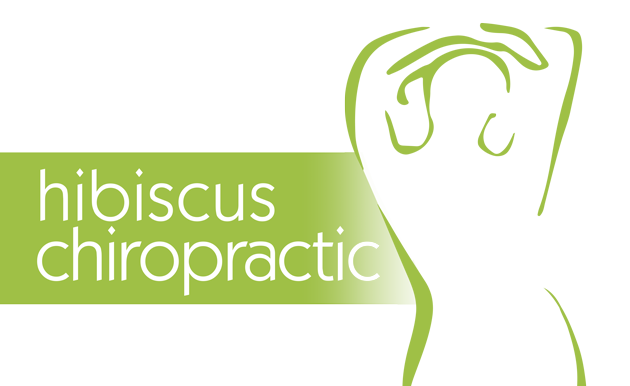This month is special because we are celebrating World Spine Day! The theme for this year is ‘Back2Back’ which is the perfect opportunity to talk about the spine’s most relatable subject— back pain. Because it is so common, you may have heard many stories about the causes of back pain and how to ‘fix’ it. But are you sure you got the right info? In this article, we will help explain its most common misconceptions and the truth behind each!
Myth #1: Back Pain is the main indication that something wrong is going on.
There is some truth to this but most of the time, this is not always the case. Spinal degeneration can start and you may not even feel any pain during the early stages. Aside from feeling pain, there are also other indications of spinal subluxations like restricted movement or discomfort in your arms, legs, and shoulders. It’s good to be aware of the little signs and not let pain be the last warning for you to get checked. Go for a spine or posture checkup even if you feel fine.
Myth #2: There must be a lot of ‘physical’ damage if I’m feeling a lot of pain.
There are two important points here, 1) More pain doesn’t mean that more damage has been caused, and 2) There are many things that can trigger pain, not just physical ‘damage’.
Take, for example, you accidentally cut your finger with a kitchen knife. The cut may be small and there’s just minimal physical damage, but for others, it can cause them a great deal of panic and pain. With this said, the actual pain level for each person varies because it depends on the threat level that your brain perceives. If you feel stressed or emotionally drained, chances are your brain will think that there’s a threat, and it will create more pain to alert you that there is a problem. Same with back pain, you may be feeling intense pain but it doesn’t mean there is significant damage physically. If you want to correct the root cause of your pain, chiropractors can be your best ally. They will help figure out if your pain is triggered by spinal misalignments or other things like mental, emotional, or environmental stressors.
Myth #3: Painkillers can ‘solve’ my back pain issues
While painkillers can be useful when it comes to giving relief in the short term, the same thing cannot be said when it comes to long-term use. Aside from the potential side effects, taking them does not correct the root cause of your pain. In the last section, we talked about how your pain is triggered by its root cause. If you don’t correct the root cause of your pain, it will likely come back worse than before and pain killers will just be there to mask the symptoms.
Myth #4: Applying ice is always better for a sore back.
Not entirely true. Ice or heat can work depending on the situation. For the first 24-48hrs of an injury or muscle soreness, we suggest applying ice. When you lower the body temperature, it will help constrict the blood vessels, reduce swelling, decrease inflammation, and cause a numbing effect. However, heat can be more beneficial for chronic or long term pain. It is advised to use low-level heat periodically for several hours or days in order to boost healing and prevent pain from returning.
Myth #5: Bed rest is recommended for back pain.
Lying down for a day to help ease the pain may seem like a good idea, but in reality, there’s not much benefit to it. In fact, it can lead to a slower recovery. Lying down for prolonged periods promotes inactivity and can make your body stiff. Especially in your back, when you don’t move or stretch it, your muscles can become weaker and less flexible. So the more bed rest you do, it’s basically making you weaker and it’s harder to return to any activity. With this in mind, the best way you can do to manage your pain is to stay active (even a little bit) just to move your muscles. The sooner you start moving, the faster you are likely to recover.
Myth #6: My back pain will get worse if I exercise.
As we have said in the previous section, staying active is essential for a faster recovery. So exercising is definitely the way to go. However, if you feel like your back pain is getting worse from exercise, it can be because of the following reasons: 1) you are overdoing it, 2) you are not exercising in a proper form, 3) the exercise is not suitable for you or it is beyond your capacity 4) your pain is too severe. In this case, we would recommend going to a registered health professional, such as a chiropractor, to help manage your pain and suggest better exercises and stretches for you.
Myth #7: Lifting causes back pain and therefore I should avoid it at all costs.
We understand if you want to avoid lifting because of the fear of damaging your back. But fear not, because there’s no basis to this. In reality, is not that ‘lifting’ is a cause of back pain, but it is because we are unaccustomed to the loads that we are lifting or if we don’t lift with a proper form. If you want to be able to lift, then you need to work on strength training and gradually build up your intensity. Don’t take shortcuts and just take your time to get used to the weights you are lifting. Another important thing is to take into account proper form when lifting. If you pick up something awkwardly, it’s likely to cause a mild strain (nothing to be worried about), but if you do this repeatedly your back may adapt the poor posture in the long term, and that’s where it can go bad. With this, it’s best to be aware of your strength capacity and proper form to avoid any lifting injuries.
Myth #8: I know where it hurts, so I need to focus only on that area.
It’s naive to think this way. There are cases where the pain is emanating from is different from the place where you are actually having issues with. Take, for example, you have pain in your shoulder but little did you know, there’s a pinched nerve somewhere in your neck that is causing this. This is the exact reason why chiropractors need not only physical assessments and clinical history but also X-rays to visualise and understand the health of your whole spine. Together, this creates a complete picture when it comes to determining and correcting the root cause of your back pain.
Myth #9: If my back pain is gone, it is OK to skip my chiropractic appointments.
At the end of the day, it’s your choice. But take note that by doing this it can set back your recovery process. As we always say, the absence of pain does not mean the underlying problem is 100% ‘corrected’. It can still leave your spine structurally misaligned which will make your pain likely to return.
When we evaluate our patients, we give their care plans with the goal of successful recovery. So there’s a reason for the schedule and the number of appointments. Missing them means you also miss out on the intended adjustments that will help you fully recover. In addition to that, you also lose the preventative role of your care plan. Every day you can experience many stressors from your daily life that can cause your spine to degrade. This is what your adjustments are for, to prevent the things that regress your recovery. You don’t want to go back to the starting point where all you feel is pain. So help yourself get better, finish your care plan and turn up for your appointments!
Ready to schedule a visit? Please call us at 022 3914994 or send us an email at gian@hibiscuschiro.co.nz

